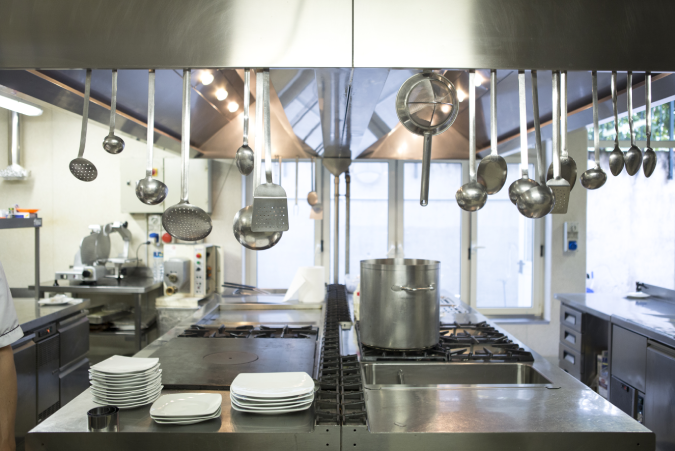Create Separate Workstations
No matter how big or small, designating certain work areas for specific tasks is very important for your kitchen organization. If you do a lot of baking, for example, you should have an area with a wooden surface for rolling out dough and working with flour and pastry but a separate area for prepping and mixing messy or sticky fillings and toppings.
The same could be said for a full-service restaurant. Keep your salad station away from your grill, and your baked goods away from where you butcher meats. Not only does this help prevent cross-contamination but it also helps the kitchen run more efficiently.
Obviously, if your space is limited you have to get creative. Use rolling racks or folding tables that can be moved or stored when not in use. Or do all your baking in the morning and then flip that workstation for another task later in the day.
Some basic workstations you should consider having:
Prepping/Baking
This is where your prep work gets done like rolling out dough. If you’re limited on space, this can also double as a prep station for chopping and mixing food items. But keeping multiuse areas thoroughly clean is extremely important to avoid contamination. Store frequently used items like spices, flours, and sugars on wall-mounted shelves or wire racks. Label everything clearly and legibly to avoid mistakes when cooking or baking. Keep knives on magnetic strips to save space, and stack mixing bowls and cutting boards on open shelves for easy access.
Cooking/Grilling
This is generally the hottest and messiest area in a kitchen. Keep items like stoves, ovens, grills, and fryers in this zone and always keep your equipment clean. Dirt, grease, and oil can cause damaging buildup to ventilation and refrigeration. Clean your stoves and fryers every day and do a thorough cleaning at the end of each week. Hang skillets and pots and pans from hooks within arm’s reach to save space. A magnetic knife bar is great in this area as well, so you don’t have to leave something on the stove to go find a knife.
Refrigeration
Ideally, this should be a decent distance from your cooking area to keep temperatures regulated and grease buildup away. Whether you have a standalone refrigerator and freezer or a walk-in refrigerator, grease buildup can do tremendous damage to ventilation, leading to expensive maintenance costs. Inside your fridge, keep all product labels visible and facing the front for quick access. Add names and expiration dates to homemade products and always have the oldest products in the front so they get used first.
Takeout/Retail Products
Keep a clean, dry area for packing up to-go items or retail products. This will prevent boxes, bags, packaging materials, and product labels from getting wet or damaged. Your product labels, tamper-proof labels, and branding stickers should remain in their original plastic packaging until ready for use. Once open, store them on nearby shelves for easy application but away from heat and moisture. Check out these inexpensive label organization hacks for more ideas on storing your labels and product packaging.
Cleaning
Create a designated area for dirty dishes and utensils, as well as a separate area for those that are drying or clean. Keep a trash can next to the dirty dish area for scraping waste. This is also a great location where wall-mounted shelving can help hold things like dish soaps, detergent, sponges, steel wool, and small supplies. Make sure you also have an area to store mops, buckets, towels, and cleaning supplies that aren’t near food prep areas. Source: avery.com.

